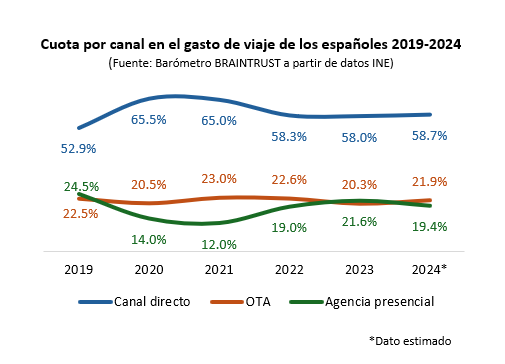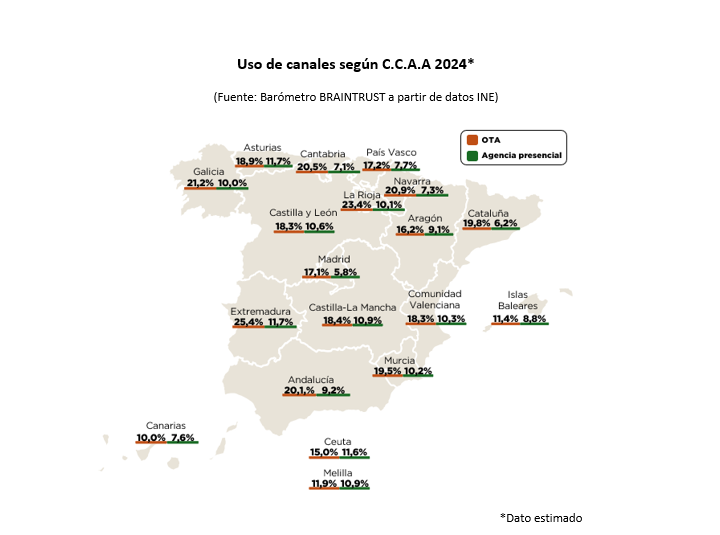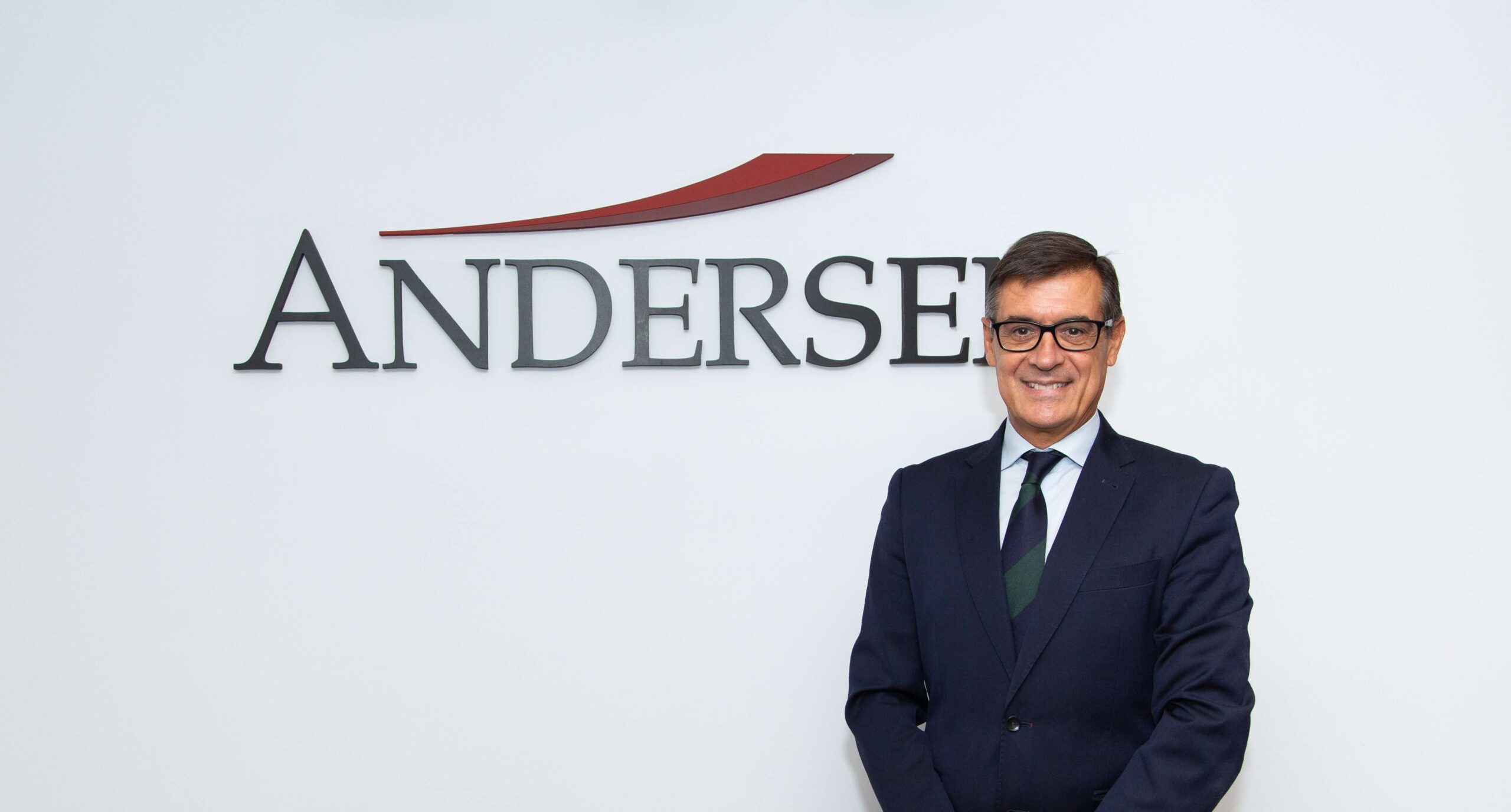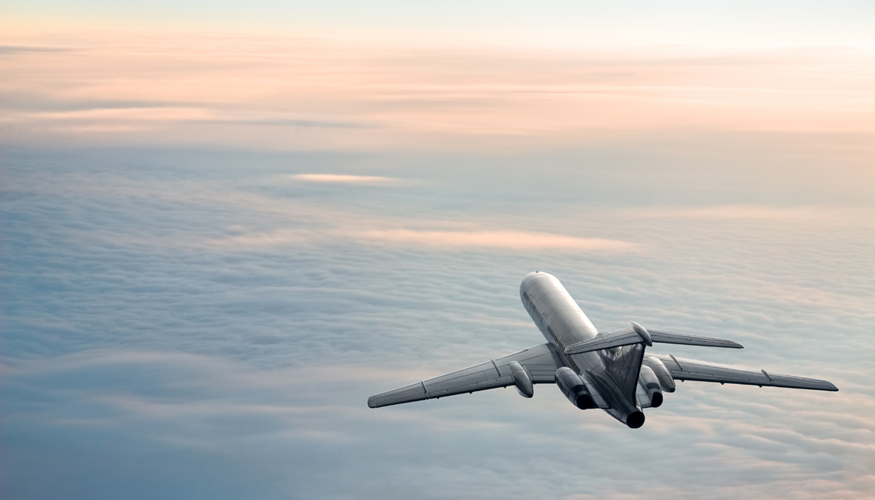The consulting and professional services firm BRAINTRUST, a leader in the tourism sector, has issued a new report of its Tourism Barometer analyzing the use of Spanish booking channels, observing how the trends of the Spanish outbound market are evolving, which seems to be recovering its usual inertia after the post-pandemic period.
Face-to-face agencies account for 19.4% of spending, OTAs for 21.9% and direct sales for 58.7%.
Looking at spending by channel, data from the new BRAINTRUST Barometer confirms that direct sales will take slightly more than half of the pie, despite the fact that traditional and digital channels have recovered ground after the pandemic. Specifically, direct sales will reach 58.7% in 2024 (down from 65.5% in 2020) while traditional and digital channels will account for 19.4% and 21.9% respectively.
Physical agencies would increase their share of Spanish outbound spending, rising from 14% in 2020 to 19.4% in 2024. And finally, OTAs would rise from 20.5% in 2020 to 21.9% in 2024, but down from 23% in 2021.

Physical agencies sweep the market in package tours with 66.7% of total spending by Spanish travelers
It is confirmed that the sale of packages continues to be a territory of traditional agencies, where they are still unbeatable, taking two thirds of the total expenditure of the Spanish traveler, specifically 66.7%. The OTAs, on the other hand, would take a third, reaching 33.3% of the total expenditure of the Spanish outbound market.
In terms of average price, this year physical agencies reached an average ticket of €743, much higher than the OTAs' €534, confirming the fact that higher-priced trips, which require expert and specialized advice, are sold in travel agency stores, while lower-priced trips, which are also less difficult, are sold on websites.
Spending on transportation would be distributed as follows: 80.5% of spending for direct sales by the end supplier, 9.8% for OTAs and 9.7% for traditional agencies. And in the case of accommodation, 67.6% of direct sales expenditure, 25.7% for OTAs and 6.7% for the physical channel.
For Ángel García Butragueño, Director of Tourism at BRAINTRUST: "Our Tourism Barometer continues to measure business indicators for the travel agency sector. After a post pandemic stage, where travel has become a vital attitude compared to the status it used to have, intermediation continues its rise in the share of spending by Spanish travelers, who see a critical added value in its value proposition. Even with fewer points of sale, the face-to-face agencies are recovering a good part of spending, due to their specialization in long-distance travel, greater complexity and better experience, with special emphasis on the value tourism package, while the OTAs are taking a good part of the dynamic package pie. Direct selling however loses ground compared to 2020, but dominates the field of single services, predominantly in transportation. The future definitely lies in omni-channel."
Older generations remain loyal to travel agencies, while younger people don't even step foot in them.
BRAINTRUST data confirm once again the aging of the face-to-face travel agency user, with 22.8% of people over 65 years of age using 22.8%, while the new generations do not even reach 5%.
In fact, while users under 25 years of age use them by 6.2% (largely motivated by study trips), users aged 26 to 35 use them by only 3.3%, those aged 36 to 45 by 5.9%, travelers aged 46 to 55 by 7.6% and those aged 56 to 65 by 10.3%.
The consulting firm once again warns agencies and recommends them to define strategies for new travelers, since the current portfolios will be depleted, posing a serious problem of inflows in the future, deteriorating their business model that will be extinguished if nothing is done about it.
Areas with larger populations use digital channels, while those with smaller populations use face-to-face channels more.
Analyzing the data in greater depth, it is very relevant to see the share of face-to-face and digital channels by traveler issuing region as shown by BRAINTRUST.
In this regard, the regions with the largest populations are less active in the face-to-face channel, with penetration close to or even below 6% in autonomous communities such as Madrid and Catalonia, with 5.8% and 6.2% respectively. However, in order to resize the networks appropriately, it is very important to observe other areas where penetrations are much higher, such as Ceuta and Melilla, Asturias, Extremadura, Castilla y León, Castilla La Mancha and Comunidad Valenciana.
For this BRAINTRUST designs a channel penetration map, which should be on the desks of all agency managers in Spain, so that they have a clear and objective vision of where the networks should be today, and how they evolve over time.

For José Manuel Brell, Partner in charge of the Quantitative Studies and Models practice, and of the Tourism and Leisure Industry at BRAINTRUST: "It is vitally important to observe the use of channels by the Spanish traveler. Important trends are observed such as the continued rise of the digital channel, albeit with an increasingly limited path, while face-to-face agencies are recovering ground, but with a major challenge, regenerating their portfolios since it is the older generations that remain loyal, while younger travelers hardly use them, due to their digital knowledge and skills, especially the millennials, the Z's and beyond. From BRAINTRUST we continue to believe in the value of intermediation, in a new era where unique and memorable moments are sought, that a traveler on his own is more difficult to achieve, while in the hand of an expert advisor of a travel agency, whether physical or digital, has more and better information, but above all has a customer orientation, fundamental when designing experiences. An objective, rigorous and continuous analysis of data such as the one we carry out through our BRAINTRUST Barometer, allows us to anticipate trends, and helps tourism companies to maximize strategies and plans for the future."






